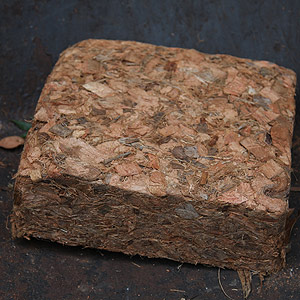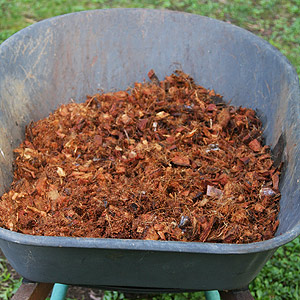
Used as a growing medium and as a substitute for Peat Moss Coco Coir is an organic product used as a soil amendment as well as means of retaining moisture in the soil.
Coco peat product suppliers and importers supply the Coir as mulch, bales bricks and grow bags. A by product of processing coconuts it is often mixed with perlite as a growing medium.
Coco peat bricks are a compressed form that only require the addition of water to be ready for use. Many manufactures and importers prefer compressed bricks as a convenient way or supplying coco peat to the end user.
Grow Bags are used widely in the horticultural industry, and suppliers can provide bulk coco peat ready for use or sale to individual requirements.
Using Coir Peat
Many gardeners will have come across depleted soil that lack structure, we look at how to improve soil structure using a few relatively cheap, or even free ingredients.

Coir Peat is one material that can be used for soil amendment and is especially useful in depleted soils that do not retain moisture. Although the same effect can be obtained using compost, coir or coco peat, does have a few advantages.
This is a material that takes a lot longer to completely break down than compost does, so in terms of water retention and structure it is longer lasting. You will find that the pH is generally fairly neutral so no problems here. And if you look at buying the stuff, its cheaper than buying compost.
So does coir replace compost ?
Not at all, what you really need is a good mixture of the original soil, re-hydrated coir and a few other additives such as compost, worm castings and other materials. And the exact mixture will depend a little on where you are, soil, drainage, rainfall and even what you are growing.
What works for us.
We live in an area where drainage is ‘excellent’ in fact probably a little to good if that is possible. So we need to add some material that will retain moisture while improving soil structure.
In general we dig out are area of around 1m to a good depth, and we do not throw the soil away, we use it. We rehydrate coir in a wheelbarrow, and this is important. Then we mix the coir with compost and some of the original soil, usually 1/3 of each. We also raid the worm farm for some worm castings, and mix this through.
This is then used to ‘replace’ the soil we have removed. We have been using this method for around 10 years and have not complaints from the plants, in fact they seem to love it.
What Is Coir Peat?
Coco coir, Coir peat or Coco Peat has been a by product of the coconut industry for over 150 years. Today the inherent qualities of coir peat make it a valuable product in itself and an increasingly valuable one for the horticultural industry. Most Coco peat is imported from suppliers in India and Sri Lanka.
Biodegradable and superior water retention qualities make coir peat not only a valuable additive to potting mix. Coir peat is now an essential for orchid growers, and a most useful soil conditioner. Discs are used by flower growers, and is also used a a bedding material in commercial worm farms. The water retention qualities make coir peat most useful in golf courses, where greens are increasingly established on a bed that includes coir peat.
In summary Coir peat, Coco Coir or Coir is used extensively in the following horticultural areas: Potting mix, Cut flower growing, Soil restoration, Hydroponics, Biodegradable pot manufacture, Golf course greens, Plant Propagation, Coir Grow Bags, Mushroom farms, Turf farms, Worm Farms, Vegetable growing, Seedling propagation and many other horticultural uses.

